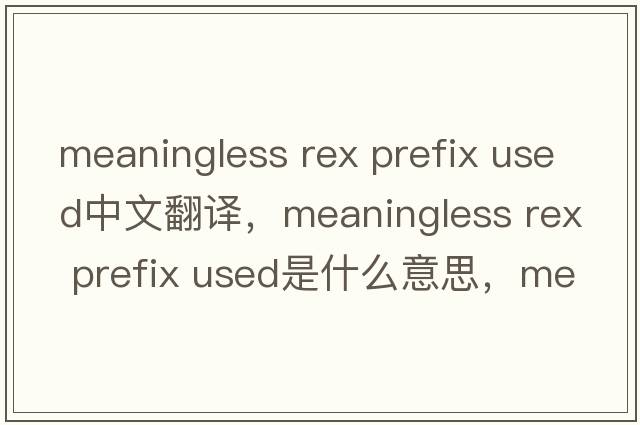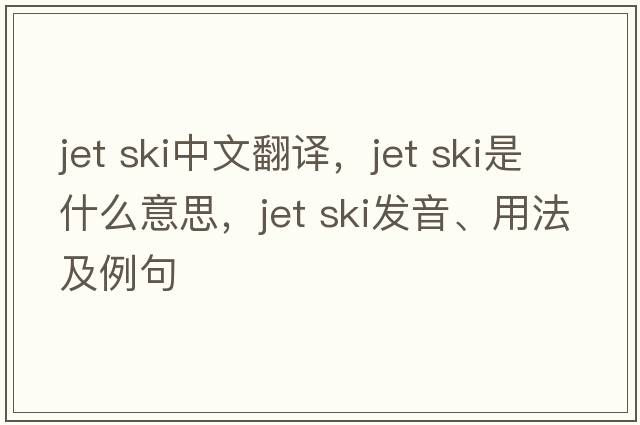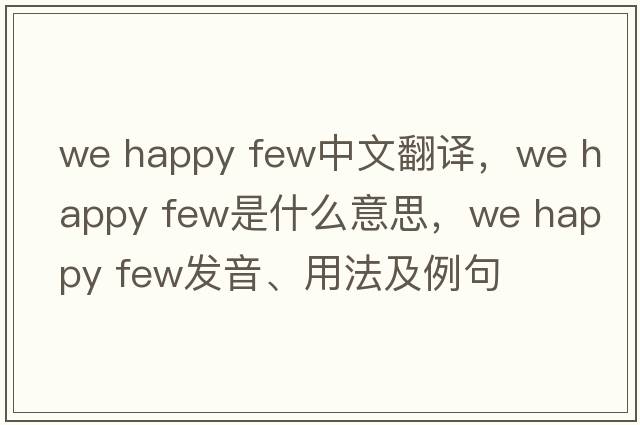meaningless rex prefix used中文翻译,meaningless rex prefix used是什么意思,meaningless rex prefix used发音、用法及例句

1、meaningless rex prefix used
meaningless rex prefix used发音
英: 美:
meaningless rex prefix used中文意思翻译
常见释义:
使用了无意义的rex前缀
2、「牙」与「邪」的谐声关系是什么?
W. H. Baxter:
The voiced uvular preceded by *m- evolved to MC ng-(注:Baxter 中古拼音疑母), like *N.ɢ (section 4.4.1.3). This is shown by xiéshēng contacts between MC ng- < *m.ɢ and MC y-(注:Baxter 中古拼音以母) of uvular origin: for example, the character 牙 yá < MC ngae(注:疑母麻韵二等) ‘tooth’is phonetic in the early graph for 與 yǔ < yoX(注:以母語韵三等) ‘give; for; and’, which we reconstruct as *m-q(r)aʔ, with a uvular initial, because of its graphic (and probably etymological) connection to 舉 *C.q(r)aʔ > kjoX(注:見母語韵三等) > jǔ ‘lift, raise’. Examples of early character forms are given in (511) (from GG2.573, 3.230, 9.692, 6.349)(注:‘GG’ 指古文字詁林).(511)(古文字詁林字形略,后同)牙 *m-ɢˁa > *ŋˁra > ngae > yá ‘tooth’(注:‘’ 指这个 ‘r’ 是中缀)與 *m-q(r)aʔ > yoX > yǔ ‘give; for; and’, pMǐn *ɣ- (注:‘pMǐn’ 指 Baxter 所构拟的原始闽语)舉 *C-q(r)aʔ > k(r)aʔ > kjoX > jǔ ‘lift, raise’邪 *sə.ɢA > *s.ɢA > *zA > zjae > xié ‘awry’(注:大写的 A 指 Baxter 不确定它与小写的 a 是否有区别); also used in a place name:琅邪 *[r]ˁaŋ-ɢ(r)A > lang-yae > Lángyá (name of a mountain in Shāndōn) (注:Baxter 使用方括号表示「里面的东西权且这么写」)If the Old Chinese initial of 牙 yá < MC ngae ‘tooth’ had been a velar nasal *ŋˁ-, yá would not have been an acceptable phonetic for 與 *m-q(r)aʔ > yoX > yǔ; thus we reconstruct 牙 *m-ɢˁa with the body-part *m- prefix. Better than a velar nasal, a uvular stop 牙 *m-ɢˁa also explains why 邪 *sə.ɢA > zjae > xié ‘awry’ has initial z-(注:Baxter 中古拼音邪母) in Middle Chinese: as we will show (section 4.4.3.4), *s-ŋ- evolves to MC s-(注:Baxter 中古拼音心母); only before voiced obstruents does Old Chinese preinitial *s evolve to MC z- (section 4.4.3.3).Forms related to 牙 *m-ɢˁa > *ŋˁra > ngae > yá ‘tooth’ occur with initial [ŋ] in southeast Asian languages: for example, Proto-Tai *ŋa (Li 1977:204), VN ngà [ŋɑ B2], and Bahnar ngəla, all meaning ‘tusk, ivory’ (Norman 1988:19). This could be taken to support a velar nasal initial in the Chinese word, but we suspect these are ivory trade words borrow from Chinese after the change of *m-ɢˁ- to *ŋˁ-, with semantic narrowing, rather than the other way around.我:OC *r 系与 *l 系在音位上互补且偶尔有谐声关系,而二者也都经常与影母及中古软腭组声母谐声。在缺乏大量数据支撑的情况下,我倾向于保守地将其视为广义的 ‘kl-’型声母。
牙 OC~MCC *ŋɹˁa → LCC *ŋɹˁa˞ → PCC *ŋʶʴa˞ → EMC *ɴʴa˞ → SMC /ɴʴa/ → LMC /ŋɨ̯a/;
與 OC~MCC *laʔ → LCC *ʎɑʔ → PCC *ʝɯ̯ʌʔ → EMC *jɯʌˀ → SMC /jɯɤˀ/ → LMC /iɤ/;
舉 OC~MCC *klaʔ → LCC *kɑʔ → PCC *kɯ̯ʌʔ → EMC *kɯʌˀ → SMC /kɯɤˀ/ → LMC /kɨɤ/;
邪 OC~MCC *l̃a → LCC *ʫa → PCC *zi̯a → EMC *ziæ → SMC /ziæ/ → LMC /zi̯æ/;
琅邪 OC~CC *ɹˁaŋla → LCC *ɾˁɑŋ.ʎa → PCC *ɾʶɑɔŋ.ʝi̯a → EMC *ɾʶɑɔŋ.jiæ → SMC /ɾɑɔŋ.jiæ/ → LMC /ɾɑɔŋ.i̯æ/。
本民科符号说明:
OC 指谐声时期,大致为西周,ECC 指以「国风」为代表的春秋时期,MCC 指乱作一团的战国时期,LCC 指秦到西汉(对音等材料表明中古「雲以邪」母在西汉表现得很有意思),PCC 指 ~100 AD(韵部开始松动),EMC 指 ~350 AD(元音整齐地高低四分、前后三分),SMC 指 ~550 AD 也就是切韵音系,LMC 指 ~800 AD 也就是韵图音系。
*l̃ 指一个鼻化的 *l,说实在的我也不确定它与 *l 是否真的有区别。另外这里的 *l 都有 [ɫ] 的倾向,舌位较为后缩,近音成分较大,爆破感不强,与 С. А. Старостин 的 *l 谐声系、W. H. Baxter的 *ɢ 谐声系实际上是相通的,只是写法不同而已。
版权声明: 本站仅提供信息存储空间服务,旨在传递更多信息,不拥有所有权,不承担相关法律责任,不代表本网赞同其观点和对其真实性负责。如因作品内容、版权和其它问题需要同本网联系的,请发送邮件至 举报,一经查实,本站将立刻删除。














